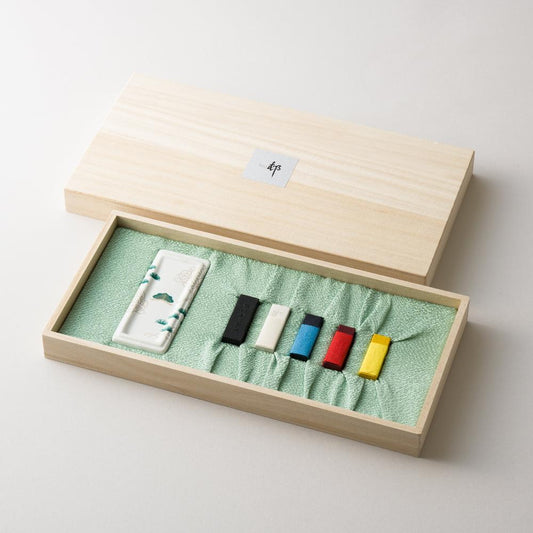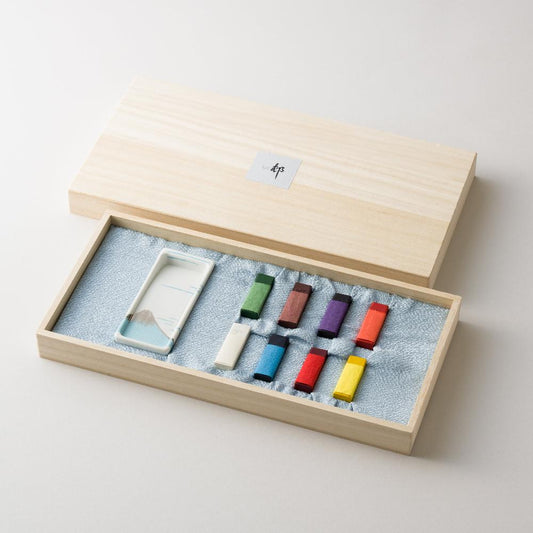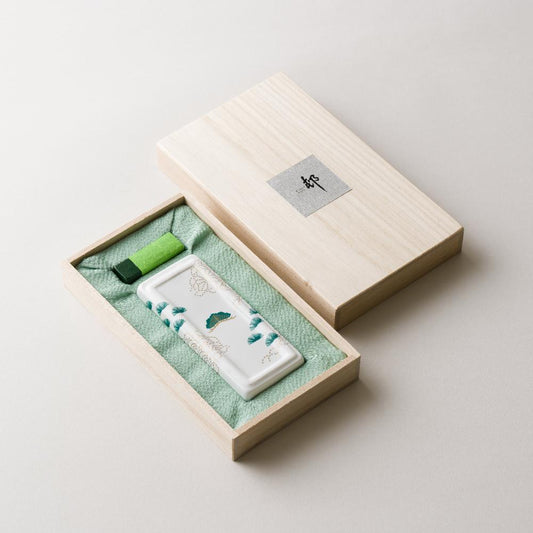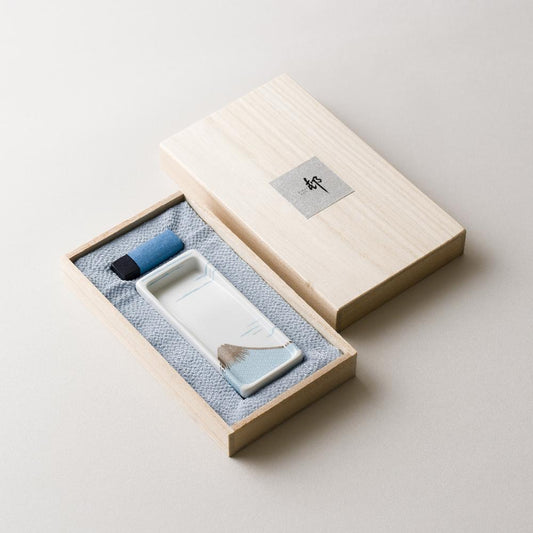rimpamura
【彩煙墨:紀州松煙】Arita Porcelain suzuri (URA) comes with 1 Kishu pine-soot Sumi ink & 4 Colorful Sumi ink sticks
【彩煙墨:紀州松煙】Arita Porcelain suzuri (URA) comes with 1 Kishu pine-soot Sumi ink & 4 Colorful Sumi ink sticks
Arita-yaki Porcelain inkstone, known for its translucent white porcelain, and the popular "Saiemboku" series developed by Masao Horiike, the shokunin (artisan) behind Japan's first colorful ink, are combined in this special set featuring one Kishu sumi (pine-soot sumi ink) and 4 colors (red, yellow, blue, white). Suitable for a wide range of uses, from authentic sumi-e painting to picture letters, ink paintings, and calligraphy art.
<Product details>
Arita Porcelain suzuri: W4.8cm × H1.4cm x L11cm
Pine-soot Sumi ink: W1.6cm × H1.1cm × L5cm
Saiemboku (each piece): W1.4cm × H1cm × L4.4cm
There are various ways to enjoy colored sumi ink:
1) Lines drawn come on top: Draw snowflakes with white ink on white paper first. Then, boldly paint the sky with blue on top, creating the appearance of falling snow.
2) Grind different colored sumi inks separately and put red on one side of a brush and blue & other different colors on different side of a brush. This allows you to enjoy beautiful gradients.
3) Since the sumi inks complement each other well, try mixing the sumi ink liquids of regular black sumi ink and colored ink to create your desired color. Please use solid ink that has been ground, not commercially available ink.
<How to Use the Arita-yaki Porcelain inkstone>:
The usage is generally the same as a regular inkstone.
1) Drop water onto the flat surface of the inkstone (called OKA)
2) Grind the sumi ink on "OKA" area. If you want a lighter color, add water to the well-ground sumi ink.
After grinding the sumi ink, be sure to wipe away excess water to prevent cracking.
<Maintenance>:
Drop the water onto the inkstone and wipe the surface with the sponge.
Since the sumi ink doesn't seep in, you can wipe it away with gentle pressure. If it is difficult to remove, place water on the inkstone surface, let it sit for 2-3 minutes to allow the sumi ink to rise, and then wipe it away again.
Couldn't load pickup availability
Share

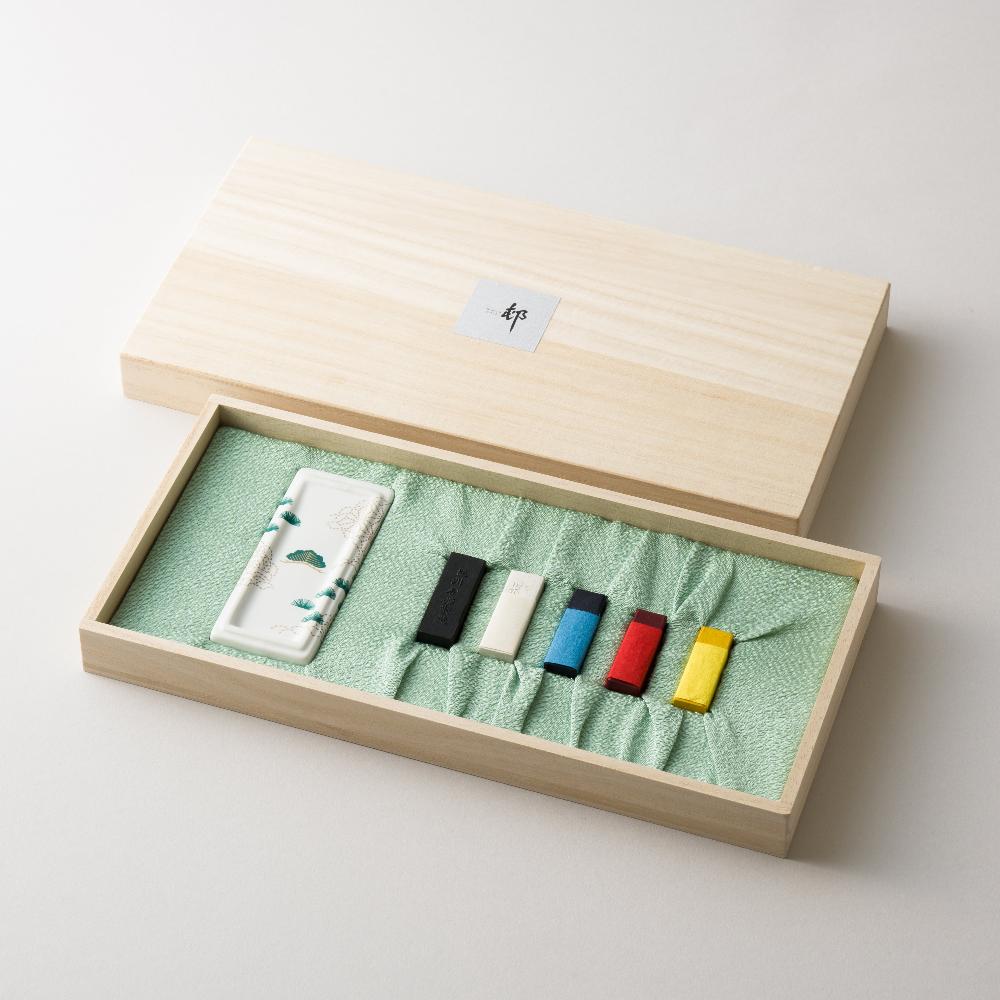
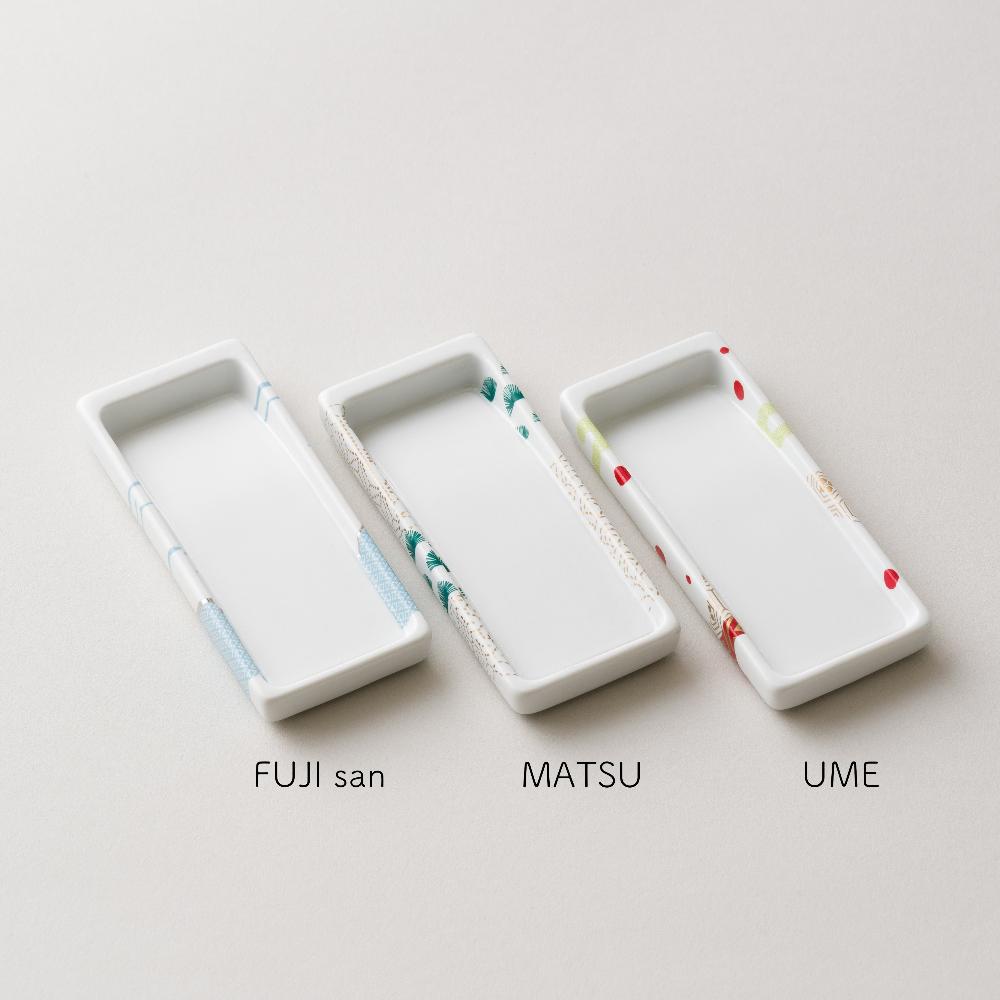



墨 Saiemboku series

Mr. Horiike is the first sumi ink stick artisan in Japan to develop and introduce colorful sumi ink stick or “Saiemboku. After being featured and gaining popularity in the book 'Gokujouhin in the Study' (published by Shogakukan Bunko), he experienced a significant breakthrough on the online shopping site of KATEIGAHO, one of the prestigious magazines.
Since then, he has continued to expand his product line as the SAIEMBOKU series, introducing various colors, and now the color variations exceed 40 !!
-
【彩煙墨:紀州松煙】Colored Sumi ink “Saiemboku”made in Kishu
Regular price $137.00Regular priceUnit price / per -
【彩煙墨:紀州松煙】5 Blue Shades
Regular price $117.00Regular priceUnit price / per -
【彩煙墨:紀州松煙】5 Black Sumi Ink
Regular price $117.00Regular priceUnit price / per -
【彩煙墨:紀州松煙】Arita Porcelain suzuri (URA) comes with 1 Kishu pine-soot Sumi ink & 4 Colorful Sumi ink sticks
Regular price $205.00Regular priceUnit price / per -
【彩煙墨:紀州松煙】Colored Sumi ink “SAIEMBOKU” (single item: red, blue, yellow, green and white)
Regular price $20.00Regular priceUnit price / per -
【彩煙墨:紀州松煙】 Arita Porcelain suzuri (OMOTE) - FUJISAN & 8 Colored Sumi ink sticks
Regular price $233.00Regular priceUnit price / per -
【彩煙墨:紀州松煙】 Gold & Silver Sumi Ink
Regular price From $69.00Regular priceUnit price / per -
【紀州墨:紀州松煙】Colored Sumi ink “Saiemboku” & Pine-soot Sumi ink made in Kishu
Regular price $123.00Regular priceUnit price / per -
【紀州墨:紀州松煙製造】Pine-soot Sumi ink made in Kishu
Regular price From $52.00Regular priceUnit price / per -
【彩煙墨:紀州松煙】 Arita Porcelain suzuri (URA) & Colorful Sumi ink
Regular price $82.00Regular priceUnit price / per -
【彩煙墨:紀州松煙】 Arita Porcelain suzuri (OMOTE) - FUJISAN & Blue Sumi ink
Regular price $82.00Regular priceUnit price / per










